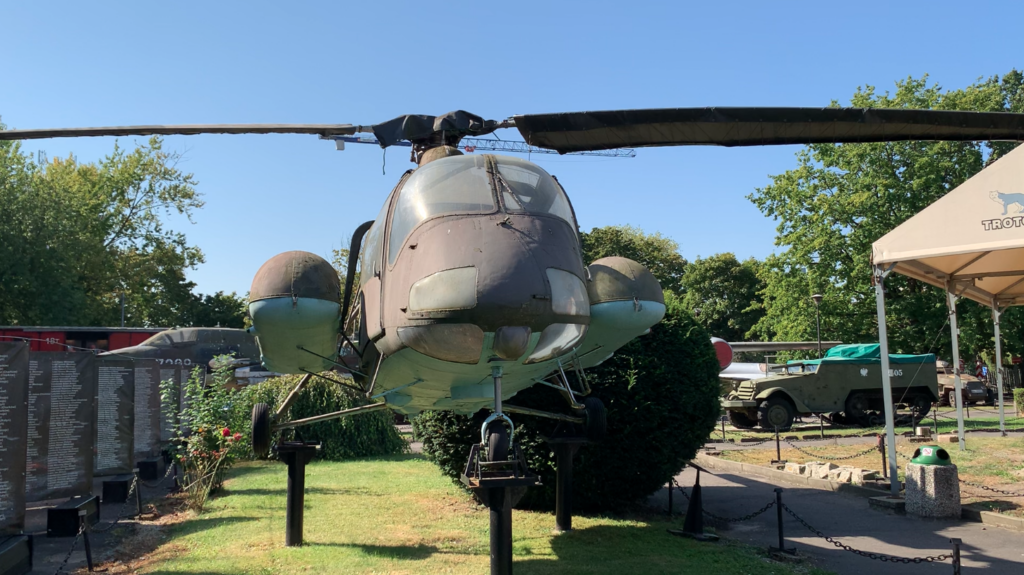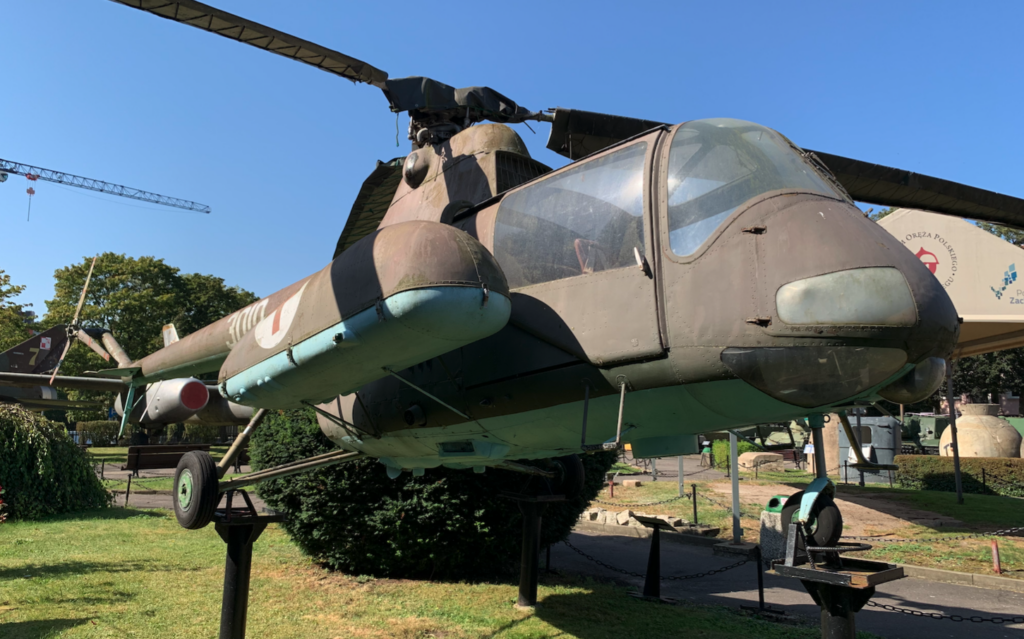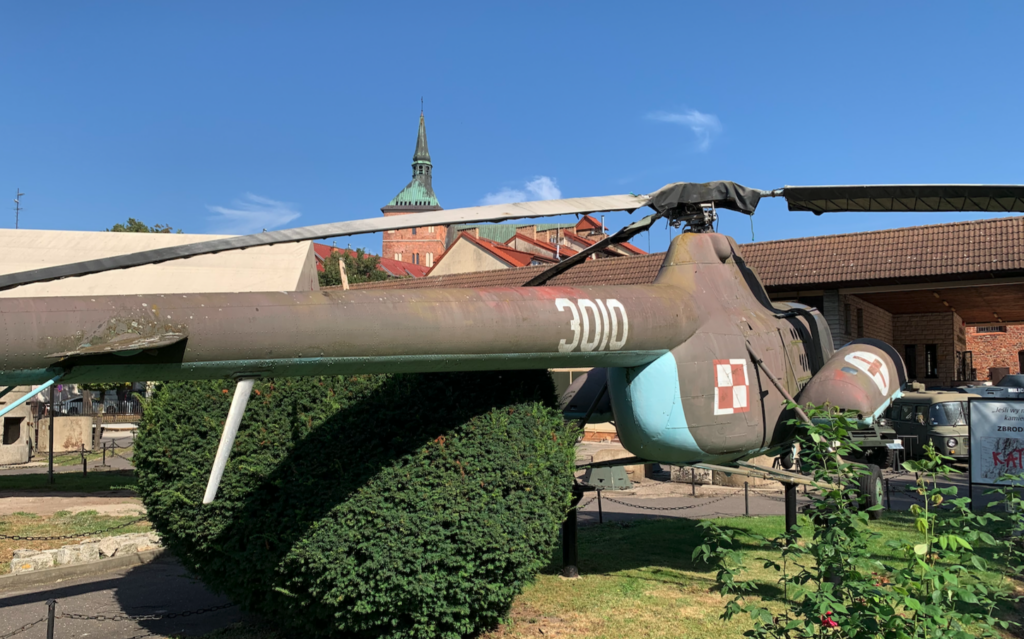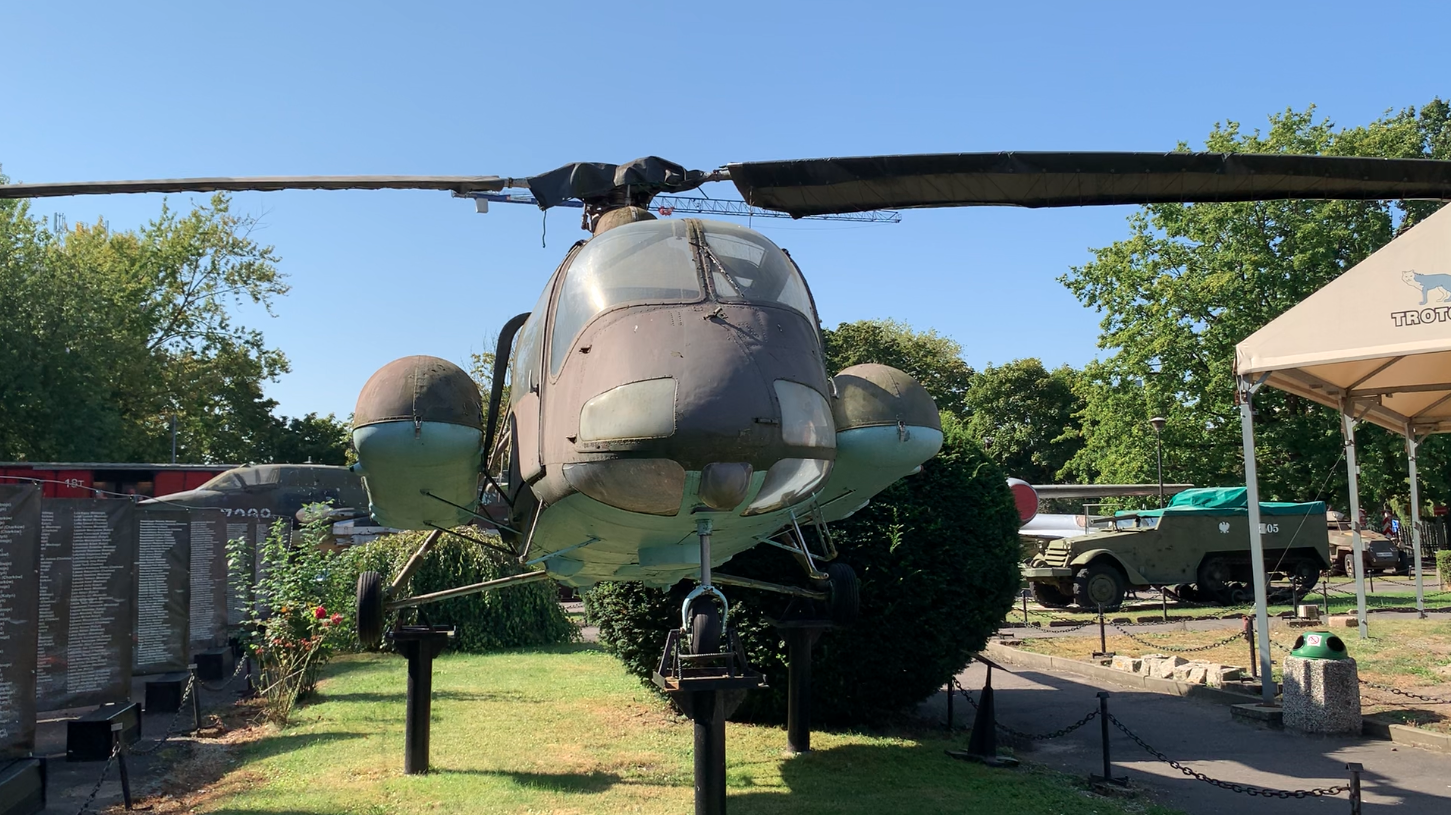Kołobrzeg 2024-11-21
WSK PZL Świdnik SM-2 nb 3010.



The idea of creating the SM-2 helicopter was to use the excess power of the Lit-3 piston engine installed in the SM-1 helicopter. An engine of such power should easily lift five people on board, not only three or four, as before. In addition, the SM-1 had several other operational shortcomings. For example, in the training version, the instructor sitting in the back had significantly limited visibility, especially what was happening right in front of the helicopter below. Another problem was the transport of patients in gondolas and access only through an impractical sleeve. This was not a comfortable situation for either the patient or the medical staff. Another problem was the way the doors of the car-type helicopter were opened. This practically prevented them from being opened during the flight. The elevator used to lift people on board the helicopter in hover could not be practically used. Therefore, for this type of operation, the doors were dismantled before the flight. The SM-1 has a fixed landing spotlight. This meant that landing after dark, in unfamiliar and unknown terrain was very risky. Using a movable spotlight would have significantly increased safety. Another drawback was the partition between the cabin and the engine compartment. This wall got very hot and caused unfavourable conditions in the cabin.
Officially, it was forbidden to criticise the Muscovite technology. However, Polish engineers were perfectly aware of the helicopter’s shortcomings, which could be remedied. In 1957, a favourable political climate was created for the development of a broad helicopter modernisation programme. An independent group of designers was created at WSK PZL Świdnik under the management of engineer Jerzy Tyrch. Initially, the new helicopter was designated S-2, but it was soon changed to SM-2.
The main change was to enlarge the cabin so that it could accommodate a patient on a stretcher and larger loads. Similar modifications were made in the West on local helicopters. In the new SM-2 helicopter cabin, two seats were placed in the front, next to each other. Thanks to this, in the training version, the student and instructor sat next to each other and had an identically good field of view. In other versions, the pilot sat in the left seat, and the passenger in the right. A sofa for three passengers was placed in the back of the cabin. A significant change was the installation of doors that could be moved backwards to open them. Thanks to this, they could be opened during the flight. Despite the large doors, it was not possible to bring a stretcher with a patient into the SM-2 helicopter cabin through them. The designers dealt with this problem by installing a small, additional door in the front of the fuselage on the right side.
The wall separating the cabin from the engine compartment was made as a double one. Air was introduced into its space, which cooled part of the wall on the cabin side. A movable searchlight was installed to facilitate landing after dark in unknown terrain.
The SM-2 powerplant remained unchanged: engine, main transmission, tail rotor shaft, main rotor, tail rotor, entire fuel and lubrication system. Three SM-2 prototypes were built; one for static tests and two for flight tests, No. S-201001 and S-201002. The SM-2 helicopter prototype first flew on November 18, 1959. The pilot was Captain Pilot Stanisław Wiącek. Then the SM-2 helicopter underwent factory tests. The tests lasted a little over one year and were completed in January 1961.
The first official presentation of the SM-2 helicopter took place in September 1960, during the so-called Łódź Air Show, which was part of the nationwide celebrations of Aviation Day. The SM-2 helicopter was sent to serial production, which lasted from 1960 to 1963. 86 machines were built, in four production series. The first 7 units, the second 19 units, the third 30 units and the fourth 30 units. Some sources give a different number of machines built; from 85 to 91 units. Several SM-2 helicopters were sold to Czechoslovakia and Romania.
At the beginning of the 1960s, the political thaw had already passed. Therefore, all inventions and modifications in the Polish Aviation Industry were not well-received. They had to be gotten rid of. A legend had to be created for the SM-2 helicopter that it was bad. And such a legend was created. It was said that the SM-2 did not live up to the hopes placed in it. That it was worse than its Soviet predecessor. That it had worse properties during take-off and worse performance in the hover. Design errors were also found; incorrect design of the air intake to the carburetor, which caused a decrease in the power of the power unit. It is true that this defect was removed in already produced machines, but it was after the decision to discontinue production of the SM-2. Production of the SM-2 ended in 1963, while the SM-1 was produced until 1965.
The SM-2 helicopter was built in four basic versions: passenger-transport-connector, medical for transporting one patient in a lying position, in a training version, as a two-rotor and in a crane version. The crane version has a winch with a load capacity of 120 kg. This version was used as a rescue helicopter over land and water. Most of the production went to the Polish Army. About 70 machines were used in the army. The first machines were sent to the 36th Special Transport Aviation Regiment at Okęcie. Most were used by artillery brigades. In addition, SM-2s were in Dęblin, the KBW (Internal Security Corps) troops, WSW (Military Internal Service), Navy and others. Civil and medical aviation used 4-5 machines. Individual machines were used in the Institute of Aviation, WSK PZL Świdnik and the Ministry of Internal Affairs. SM-2 helicopters began to be withdrawn from use in the 1970s, replacing them with PZL Mi-2 helicopters. The last SM-2 from the Polish Army was withdrawn in 1979. In Poland, 5 helicopters were lost in accidents.
In the Polish Arms Museum in Kołobrzeg, the presented example of PZL SM-2 nb 3010 was transferred in 1978, from the 56th Helicopter Regiment in Inowrocław (JW. 1641).
Written by Karol Placha Hetman

